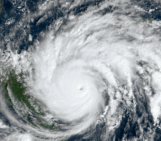
While a previous blog entry dealt with the question whether we can use lessons from the nonlinear nature of climate for projections of the Covid-19 pandemic, there is now a first example of how the pandemic can teach us something on climate. The several weeks long lockdown of China made February 2020 an exceptional month in terms of air quality; aerosol emissions were tremendously reduced leading to a situation where people fighting air-pollution could so far only dream of.
But what does this mean for regional and remote weather and climate? Aerosols, the particles that generally cause the air pollution are also an important agent for cloud formation. So far, it was only possible to study these kinds of questions using dedicated experiments with reduced aerosol emissions in climate or Earth system models. At the same time, aerosol and cloud processes belong to the climate processes that are most difficult to capture well with these numerical models.
A recent study by Axel Timmerman et al. submitted to the EarthArxiv makes use of this real-world experiment, where aerosols over China have been largely reduced for one month. A suite of global climate model simulations is performed where aerosol concentrations over China a reduced by 65% during the month February. The regional and remote weather impacts are compared with weather observations and suggest the reduction of aerosols leads to larger cloud droplets and increased low cloud cover. This clearly affects the radiation balance – even if it is only for a short duration.
We cannot beat the Covid-19 pandemic with these kind of studies, but they are very important in order to make wise decisions towards future air-pollution mitigation strategies.



